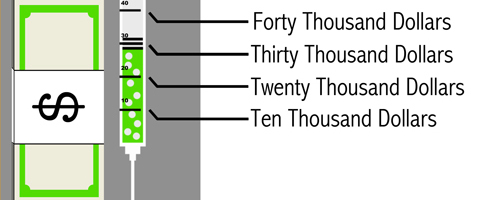$530 a month.
$130 a week.
That’s how much a graduate teaching assistant makes.
Well, of course, we get a $3,000 tuition break, too. And, yes, we get the benefit of having access to the break rooms and lounges. Oh yeah, let’s not forget the biggest perk: keys to certain offices and classrooms (oooooh).
But going inside the world of T.A.s, is it really the perk most other students believe it to be?
The first thing to understand is what a T.A. really is. A T.A. is not a student teacher, as most people think. Yes, the T.A. will sometimes lead classes (and most definitely side study sessions), but this isn’t the primary aspect of the role.
The main facet of being a T.A. is, in actuality, being exactly what the name says. You’re the assistant to the teacher, which pretty much means that you do exactly what the teacher tells you to do. Coffee, lunch and even illegal activity. No details were shared on the record about that third facet.
One of the T.A.s I spoke to passed along a story that a fellow T.A. had shared. During a particularly busy time, with lots of work and such, the professor sat him down and told him that T.A.s should consider the meaning of “teacher’s assistant” to be an abbreviation of a longer version of what the position actually stands for: “teacher’s ass.” As in you do what you’re told to do and when you’re supposed to do it.
But it’s not only just that, of course. You’re also supposed to do the tasks given in the precise way the teacher wants them done. Never mind that there may be more efficient, productive and/or successful ways to accomplish certain things. If you don’t do the assigned tasks exactly how they want them to be done, you’ll be “taken to task,” without a doubt. Because certainly, there’s more than enough time, right?
Well how about that part then? The time portion. A T.A. at Portland State is required to take at least 9 credits to get their “massive” monthly stipend, and this may or may not be in addition to the classes they need to work for their professor, though that is definitely in addition to the work they will do for the professor.
One of the T.A.s on campus is more or less teaching three classes for the professor while also taking a full load of classes just so graduating on time is a possibility. A T.A. position is only a two-year appointment after all (with no summer term considerations, either), so the program’s credits need to be finished, all while taking on teaching some classes, as well as side work for the professor.
Upon hearing all that it entails versus the positives, another student who was gunning for a T.A. post decided against it.
Smart move.
But speaking of the positives while considering the negatives, why do we do it? Well clearly it can’t be because of the pay. In talking with several T.A.s, the consensus is that they’re looking for the same things:
a) To learn more about their particular field.
b) To be able to get on-the-job experience (assuming what their professor does falls into that category).
c) To network.
d) To get a good letter of recommendation.
Those are all good things, certainly. But one needs to keep in mind that, depending on the relationship between T.A. and professor during and/or at the end of a T.A. appointment, not to mention the professor’s willingness, some or all of the things on the list may not be achieved.
But that aside, we can also take a look at something that is simply black-and-white: the numbers.
Graduate Tuition–College of the Arts (9 credits): $3,528.00
Student Health Insurance (mandatory): $594.00
Mandatory Fees: $423.00
Other Fees on Account(assorted): $115.00
Graduate Matriculation Fee: $150.00
T.A.s think they’re getting a good gig that not only comes with a tuition break, but a paycheck. And, in fact, a T.A. will get $3,000 in tuition waived per term, combined with $531 per month (after taxes, rounded up).
The math is pretty clear. Based on the amount above (not including the matriculation fee), the costs are around $4,800 a term. A T.A.’s total income, waiver and all, is $4,593 after taxes.
I know what you’re thinking: “But it just about evens out!” True… but what about food? And a place to live? And electricity to power that place? If it evens out, that means none of the paycheck is able to go toward living expenses, which are required to, well, live.
In fact, T.A.s often need to take loans out to meet both their academic cost obligations and their living expenses, not simply because their costs outbalance their income, but because being a T.A. often means you do not have the schedule space to have a job to cover the rest of your expenses.
So clearly the costs of schooling plus living are much more than the incoming money. Is this made clear to T.A.s by the professors, the departments or financial aid, either in verbal or written form?
Of course not. Why would they make it clear? They’re getting unlimited labor for cheap, and in return they provide a position—if it can even be considered such—that is certainly much less significant than we are led to believe in tandem with a pittance of a paycheck. And who really cares if T.A.s need to take out loans even though they’re working their asses off? It’s not the school’s problem, after all.
Hell, I know T.A.s who have moved here to take the post because they think it’s more than it really is. And I know of at least one T.A. who is leaving the post because of what it really is.
It’s the biggest bait-and-switch there is today (aside from what’s in Taco Bell’s beef product).
So, to sum it all up: low pay, long hours, no guarantees of benefit, possible illegal activity, oh, and the ol’ bait-and-switch.
So tell me: Why are T.A. positions coveted again?
Signed, B.K.






